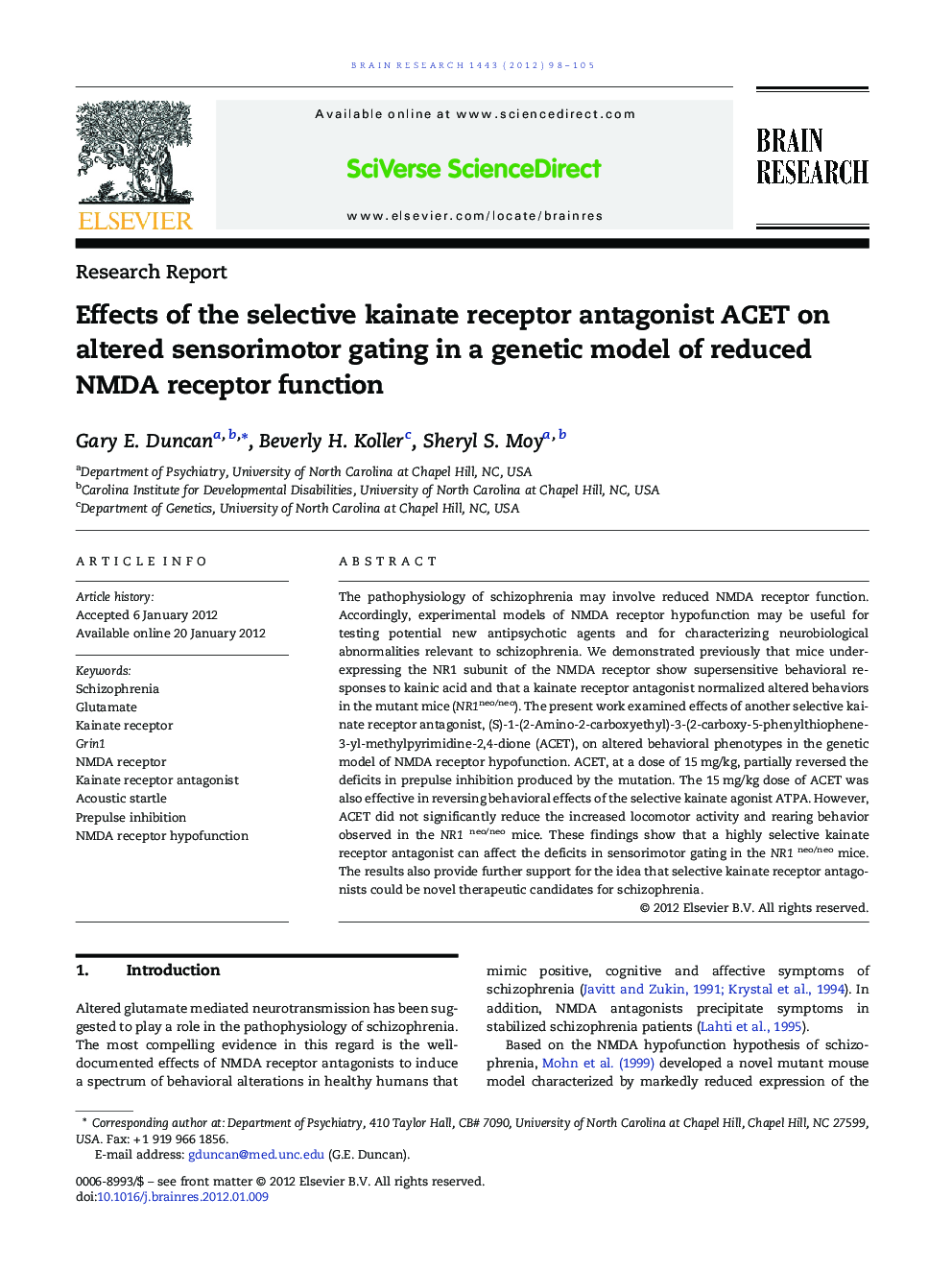| Article ID | Journal | Published Year | Pages | File Type |
|---|---|---|---|---|
| 4325365 | Brain Research | 2012 | 8 Pages |
The pathophysiology of schizophrenia may involve reduced NMDA receptor function. Accordingly, experimental models of NMDA receptor hypofunction may be useful for testing potential new antipsychotic agents and for characterizing neurobiological abnormalities relevant to schizophrenia. We demonstrated previously that mice under-expressing the NR1 subunit of the NMDA receptor show supersensitive behavioral responses to kainic acid and that a kainate receptor antagonist normalized altered behaviors in the mutant mice (NR1neo/neo). The present work examined effects of another selective kainate receptor antagonist, (S)-1-(2-Amino-2-carboxyethyl)-3-(2-carboxy-5-phenylthiophene-3-yl-methylpyrimidine-2,4-dione (ACET), on altered behavioral phenotypes in the genetic model of NMDA receptor hypofunction. ACET, at a dose of 15 mg/kg, partially reversed the deficits in prepulse inhibition produced by the mutation. The 15 mg/kg dose of ACET was also effective in reversing behavioral effects of the selective kainate agonist ATPA. However, ACET did not significantly reduce the increased locomotor activity and rearing behavior observed in the NR1neo/neo mice. These findings show that a highly selective kainate receptor antagonist can affect the deficits in sensorimotor gating in the NR1neo/neo mice. The results also provide further support for the idea that selective kainate receptor antagonists could be novel therapeutic candidates for schizophrenia.
► NR1 hypomorphic mice show reduced prepulse inhibition of acoustic startle. ► NR1 hypomorphic mice have predictive value for detecting antipsychotic activity. ► Effects of a selective kainate antagonist, ACET, were examined in the model. ► ACET reduced the PPI deficits in the NR1 hypomorphic mice. ► The results suggest that kainic acid antagonists could have antipsychotic activity.
